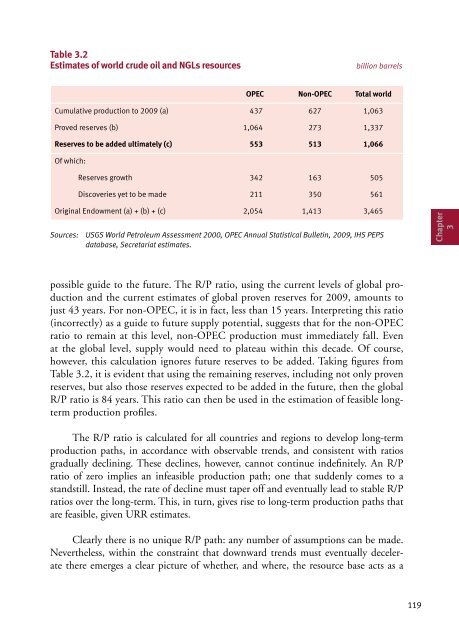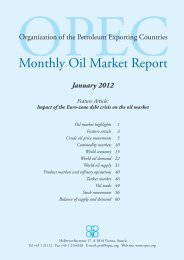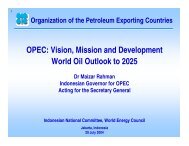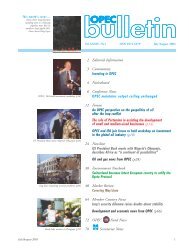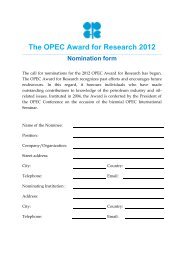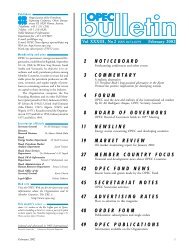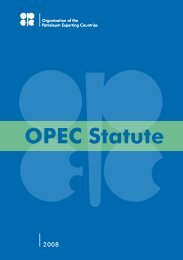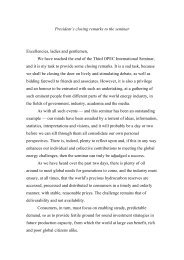Section One
Section One
Section One
You also want an ePaper? Increase the reach of your titles
YUMPU automatically turns print PDFs into web optimized ePapers that Google loves.
Table 3.2<br />
Estimates of world crude oil and NGLs resources billion barrels<br />
OPEC Non-OPEC Total world<br />
Cumulative production to 2009 (a) 437 627 1,063<br />
Proved reserves (b) 1,064 273 1,337<br />
Reserves to be added ultimately (c) 553 513 1,066<br />
Of which:<br />
Reserves growth 342 163 505<br />
Discoveries yet to be made 211 350 561<br />
Original Endowment (a) + (b) + (c) 2,054 1,413 3,465<br />
Sources: USGS World Petroleum Assessment 2000, OPEC Annual Statistical Bulletin, 2009, IHS PEPS<br />
database, Secretariat estimates.<br />
possible guide to the future. The R/P ratio, using the current levels of global production<br />
and the current estimates of global proven reserves for 2009, amounts to<br />
just 43 years. For non-OPEC, it is in fact, less than 15 years. Interpreting this ratio<br />
(incorrectly) as a guide to future supply potential, suggests that for the non-OPEC<br />
ratio to remain at this level, non-OPEC production must immediately fall. Even<br />
at the global level, supply would need to plateau within this decade. Of course,<br />
however, this calculation ignores future reserves to be added. Taking figures from<br />
Table 3.2, it is evident that using the remaining reserves, including not only proven<br />
reserves, but also those reserves expected to be added in the future, then the global<br />
R/P ratio is 84 years. This ratio can then be used in the estimation of feasible longterm<br />
production profiles.<br />
The R/P ratio is calculated for all countries and regions to develop long-term<br />
production paths, in accordance with observable trends, and consistent with ratios<br />
gradually declining. These declines, however, cannot continue indefinitely. An R/P<br />
ratio of zero implies an infeasible production path; one that suddenly comes to a<br />
standstill. Instead, the rate of decline must taper off and eventually lead to stable R/P<br />
ratios over the long-term. This, in turn, gives rise to long-term production paths that<br />
are feasible, given URR estimates.<br />
Clearly there is no unique R/P path: any number of assumptions can be made.<br />
Nevertheless, within the constraint that downward trends must eventually decelerate<br />
there emerges a clear picture of whether, and where, the resource base acts as a<br />
119<br />
Chapter<br />
3


